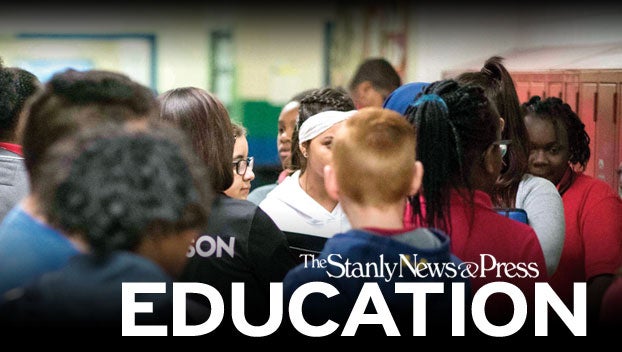As Stanly’s COVID-19 numbers rise, state issues predictions
Published 11:43 am Tuesday, April 7, 2020

- Atrium is working to spread the word of how to curtail infections.
|
Getting your Trinity Audio player ready...
|
As the number of COVID-19 cases in Stanly County reached eight Monday, officials from the state’s Department of Health and Humans Services reported predictions regarding the spread of the disease.
In a press conference Monday afternoon, a group of epidemiologists and college professors presented statistical projections about the coronavirus in North Carolina.
Dr. Arron McKeithan, an adjunct professor at Duke University’s School of Medicine, presented the findings along with several collaborators in the study.
McKeithan likened the process of predicting COVID-19 spread using a forecasting weather metaphor. He said it’s hard to predict the precise day a hurricane will hit North Carolina’s shores, but it helps to have an informed probability, like weather forecasts.
One difference between weather and COVID-19, McKeithan added, was epidemiologists do not have the ability to predict the path of a pandemic like a hurricane’s trajectory.
The study used two possible policy scenarios to determine the magnitude of a “COVID-19 hurricane threatening our state.”
One scenario was the maintaining of current stay-at-home and social distancing policies past April 29. The other was one where all the policies were lifted and people went back to life like before the pandemic with no social distancing.
Dr. Mark Holmes, professor with the Gillings School of Global Public Health at UNC-Chapel Hill, said the brief issued looked to answer two questions. One was the likelihood the demand for hospital services generated by COVID-19 would outstrip the state’s available hospitals. The other was the potential timing of when that increased demand would come.
With the state trying to slow the curve using social distancing and a stay-at-home order, Holmes said the order is increasing the capacity statewide of beds including ICU beds and ventilators in the state’s healthcare system.
Holmes said he and his colleagues were not assuming or recommending the policies in place can or should be extended in their current form. The study merely assumed the continuation of current policies or the introduction of a new policy with similar effectiveness.
The study also does not see an increase statewide of beds at around 50 percent because of the substantial increase for nurses and other qualified personnel needed for specialized care.
Holmes said if the rate continues as it is today, the group projects a 20 percent chance by June 1 gaps will exist in the system’s ability to meet demands.
If the social distancing policies are stopped after April 29, that chance of a shortage of beds rises to 50 percent from mid to late May.
Those numbers also assume a 45 percent reduction in bed capacity by hospitals in the system, decreasing overall occupancy by measures such as reducing elective procedures.
The study concluded maintaining social distancing policies gives the system its best chance of managing what is to come for the coronavirus. Lifting policies would lead to a greater shortage of beds, while increasing beds does not completely solve the problem of how many beds will be needed at the apex of the virus’ spread.
Dr. Kim Powers, an epidemiologist also with UNC-Chapel Hill, was asked about random testing in North Carolina. Powers said more than 1,000 tests would be needed and have to be repeated over time. She said the state must have sufficient testing capacity for suspected cases, and large-scale random testing would give a lot of information — but she did not think the state was at that point yet.
Dr. Pia McDonald, an adjunct associate professor at UNC-Chapel Hill, said the models are just tools, estimates are just that — estimates.
“You need the expertise around the tool to make them work the best,” McDonald said.
She said policies like social distancing and stay-at-home orders are key, but it’s the adoption and practice by communities which is a very important component.





